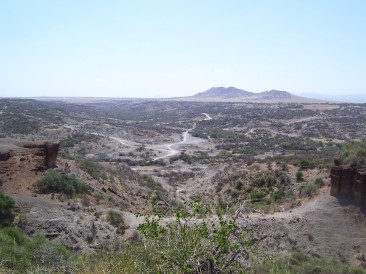
(Reposted from The Earth Story, https://www.facebook.com/TheEarthStory/posts/977645872296457:0)
When elephants and humans collide, it’s not always the humans that come out on top. Elephants that wander into farmland can do significant damage to crops, fences, and even buildings, sometimes injuring or killing people. Besides the damage itself, the antagonism created with the residents can hinder conservation efforts in rural areas. Some projects have attempted to keep elephants out using beehives – elephants are deathly afraid of bees – but another approach presented at last week’s meeting of the American Geophysical Union takes advantage of the way elephants communicate. When an elephant sounds a warning call, it uses infrasound – low frequencies that are below human hearing but can travel long distances – as well as vibrations that other elephants feel through their feet. Some attempts have been made to scare elephants away from villages by broadcasting infrasound imitations of alarm calls, but Sue Webb and colleagues at the University of Witswatersrand think that the lack of accompanying seismic rumble is enough to clue in clever elephants that it’s a false alarm.
To that end, they deployed a seismic study to record elephants trained to “rumble” on command. After a few false starts when the elephants investigated the new equipment too closely, the sensors were buried to keep them out of harm’s way and the signals were recorded. Audio of the elephant’s rumble is in the BBC article linked below – the audible portion, at least. The team is still reviewing the results, but they are already seeing unique seismic signals that are far-traveling. If the group from Wits is right, then coupling both an infrasound signal and a seismic one together may be enough to trick curious pachyderms into staying out of habited areas, making life safer for both them and us. Turning their findings into a useful, affordable solution that can be easily deployed may take more work, but understanding the details of how elephants really communicate is a step in the right direction.
The researchers also recorded some different data – what happens when a baby elephant learns about birds for the first time: http://bit.ly/1VNhDjn
The video was taken by Sue Webb, and proceeds from the ad venue go to supporting the research project.
Image: PJ KAPDostie
Sources:
Sue Webb, AGU presentation: “Investigating the seismic signal of elephants: using seismology to mitigate elephant human conflict”
BBC: http://bbc.in/1OgLFuS


